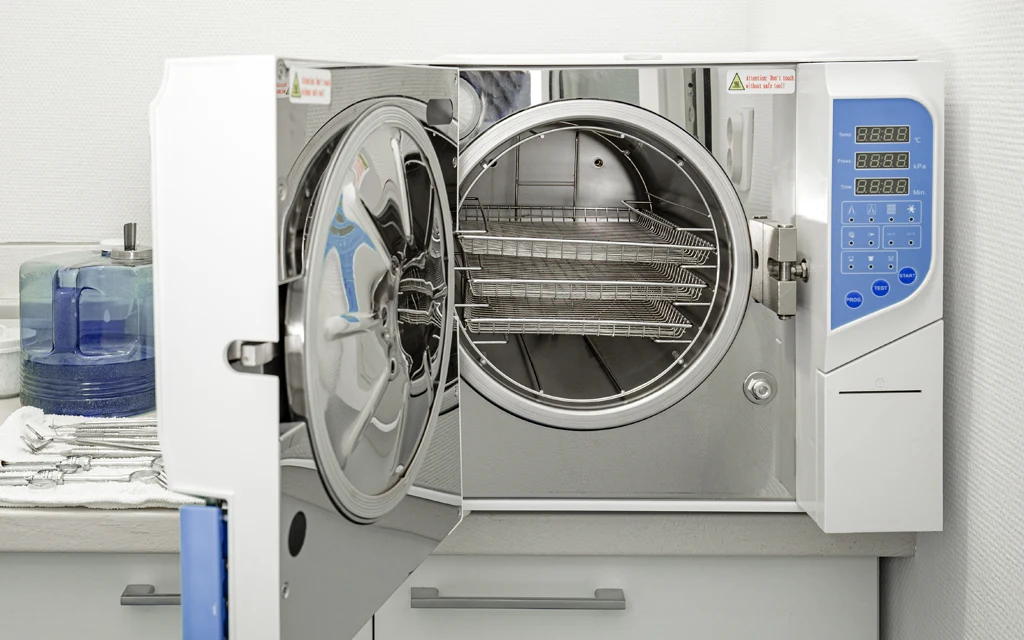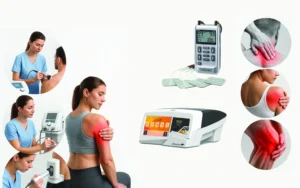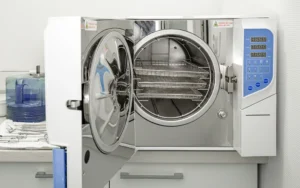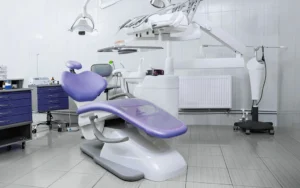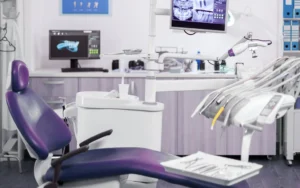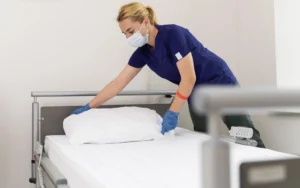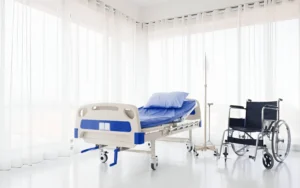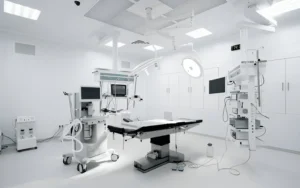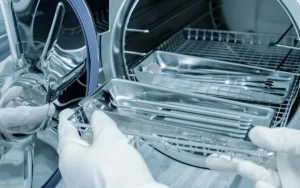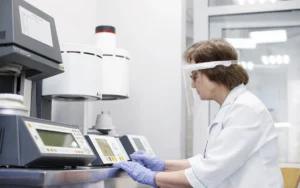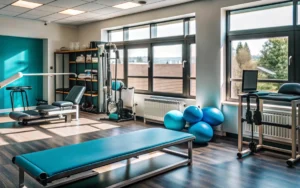An autoclave is a machine that uses steam under high pressure to kill germs, bacteria, and viruses on tools and equipment. Its main purpose is to make sure everything used during dental treatments is clean, safe, and free from infection-causing microbes.
In dental clinics, infection control is a top priority. Dentists use the same tools on many patients, so keeping them sterile is a must. An autoclave helps clinics follow strict health and safety rules. It protects both patients and staff from harmful infections. Without proper sterilization, diseases can easily spread from one person to another.
The autoclave works in a simple but powerful way. It heats water to produce steam and then pushes that steam into a sealed chamber. Inside, the high-pressure steam reaches temperatures hot enough to destroy even the toughest germs. After a set time, the autoclave dries the tools, making them ready for the next use.
In short, an autoclave is like a safety guard in a dental clinic. It keeps tools clean, protects health, and helps clinics stay compliant with hygiene standards.
Table of Contents
Types of Autoclaves Used in Dentistry
Dental clinics use different types of autoclaves to keep their tools sterile. Each type works differently and suits different needs. Autoclaves fall into different groups based on their class, function, and capacity. These categories depend on how well the sterilizer works and what it is designed to do. Here’s a simple breakdown of the three main types used in dentistry:
Autoclave By Class
Class B Autoclaves – Most Recommended for Dental Clinics (UAE Standard)
Class B autoclaves are the most advanced and trusted type. They use a vacuum pump to remove air before steam enters the chamber. This helps the steam reach every part of the tools—even hollow or wrapped items. Dental clinics in the UAE mostly use Class B autoclaves because they meet the highest safety standards. They work well with all types of instruments and offer top-level sterilization. If a clinic handles many patients and uses complex tools, Class B is the best choice.
Class S Autoclaves
Class S autoclaves are a step below Class B. They offer more options than basic models but don’t have a full vacuum system. They work well for solid and unwrapped instruments but may not reach deep into hollow tools. Some smaller clinics use Class S autoclaves when they don’t need to sterilize a wide range of items. They offer good performance but are not as flexible or powerful as Class B machines.
Class N Autoclaves
Class N autoclaves are the simplest type. They use steam without a vacuum and are only suitable for solid, unwrapped tools. They cannot clean hollow instruments or wrapped packs properly. Class N is often used in small clinics or practices with basic needs. However, they do not meet the high sterilization standards required in many countries, including the UAE.
Autoclaves by Function
Vertical Autoclaves:
These have chambers that stand upright and open from the top. They are usually small, making them perfect for places with limited space or for sterilizing small loads. You often find them in research labs, dental clinics, doctor’s offices, and veterinary centers.
Horizontal Autoclaves:
These autoclaves have chambers that lie flat horizontally. They handle large amounts of equipment at once, so hospitals and research centers often use them. Their big chambers can fit bulky tools or many instruments. Features like extendable shelves and rolling carts make loading and unloading easier, especially for heavy items or frequent use.
Pass-thru Autoclaves:
These have doors on both sides of the chamber. This design helps keep sterile and non-sterile areas separate. Items go in on one side to be sterilized and come out the other side clean. Hospitals, drug manufacturers, and biocontainment labs use these to prevent contamination between rooms.
Hinged Autoclaves:
They have a single door attached with a hinge arm that opens easily. This design suits places that need to access the autoclave often. They are strong and durable, and you can get different chamber sizes. Small and medium facilities like them because they work well and don’t take much space.
Front-Loading Autoclaves:
These autoclaves have a horizontal chamber with a door in front, making it simple to load and unload trays or racks. Many industries choose this style for its convenience and efficiency.
Tower Autoclaves:
Tower autoclaves stack two vertical chambers on top of each other. This saves floor space while allowing more sterilization at the same time. Hospitals and busy labs use them to handle many loads without needing extra room. They can run both chambers together or one after another, increasing work speed.
Autoclaves by Capacity
Small Capacity Autoclaves:
Also called benchtop or tabletop autoclaves, these are compact and easy to move. Their chambers hold 1 to 45 liters. They work well for sterilizing small tools, glassware, and lab media. Small autoclaves fit in tight spaces like countertops and are budget-friendly. You’ll find them where space is tight but sterilization is important.
Medium Capacity Autoclaves:
These hold between 45 and 200 liters. They are good for moderate sterilization needs and can handle multiple trays, wrapped items, or bigger equipment. Veterinary clinics, ambulatory surgical centers, and mid-sized labs use them because they balance size, cost, and capacity.
Large Capacity Autoclaves:
With chambers bigger than 200 liters, these autoclaves are made for heavy-duty sterilization. Hospitals, drug factories, and industrial places rely on them to sterilize large loads or big items like trays, bedpans, or waste containers. Large autoclaves usually need a pit in the floor so the chamber sits at ground level. This setup allows staff to roll carts directly into the autoclave easily.
In summary, Class B autoclaves are the best and most reliable for dental clinics, especially where strict hygiene is a must. Class S is good for mid-level needs, and Class N is only for basic sterilization. Choosing the right one depends on the clinic’s tools, workload, and safety standards.
If you are about to buy an autoclave in Dubai, here is our checklist to consider.
Key Factors to Consider Before Buying an Autoclave
Choosing the right autoclave for your dental clinic is a big decision. You need a machine that fits your needs, works efficiently, and lasts long. Here are the key things to look at before you buy:
Capacity and Chamber Size
Think about how many tools you use every day. A bigger chamber lets you sterilize more instruments in one go, saving time. If your clinic is busy or has multiple chairs, go for a larger-capacity autoclave. On the other hand, if your practice is small, a compact model might be enough.
Cycle Time and Drying Efficiency
Fast sterilization cycles help you treat more patients without delays. Look for an autoclave that has short cycle times and dries instruments completely. Proper drying prevents rust and keeps tools ready for use.
Type of Instruments Being Sterilized
Check the types of tools you use—solid, hollow, wrapped, or porous. Class B autoclaves are ideal if you handle all types, especially hollow and wrapped ones. Make sure the autoclave can handle your daily sterilization load and tool variety.
Ease of Use & Automation
An easy-to-use autoclave saves time and reduces mistakes. Touchscreen displays, automatic cycles, and clear indicators make operation smooth. If your staff is handling sterilization, user-friendly features are a must.
Water Source and Drainage Needs
Some autoclaves need a direct water connection, while others use a built-in water tank. Think about your clinic’s setup. Also, check where the used water will go—having a proper drainage plan will keep things clean and hassle-free.
Maintenance Requirements
Every autoclave needs regular cleaning and care. Choose one with easy access to parts and clear maintenance instructions. Some models alert you when service is due, which helps avoid breakdowns.
Brand Reputation & After-Sales Service
Buy from a trusted brand that offers good support after the purchase. A strong warranty, quick service, and easy availability of spare parts are important. Ask around or check reviews to see how the company supports its customers.
To sum up, the right autoclave should match your clinic’s size, tool types, and daily needs. It should be fast, easy to use, and backed by a reliable brand. Taking time to choose wisely will save you money, effort, and stress in the long run.
As a medical equipment supplier in Dubai, UAE, we have firsthand experience listening to stories about mistakes people make when buying autoclaves. Here are a few—please avoid them.
Common Mistakes to Avoid When Purchasing an Autoclave
Buying an autoclave is a big investment for your dental clinic. If you choose the wrong one, it can lead to delays, repairs, and extra costs. Here are some common mistakes you should avoid:
Going for the Cheapest Option
It’s tempting to choose the lowest-priced autoclave to save money. But cheaper models often lack important features, take longer to sterilize, or break down easily. In the long run, you may end up spending more on repairs or even replacements. Instead, focus on value. Look for a machine that offers good performance, safety, and durability.
Not Considering Future Clinic Growth
Many clinics buy an autoclave that fits their current needs but forget to think ahead. If you plan to hire more staff, add more chairs, or treat more patients in the future, your autoclave should be able to handle the extra load. Choosing a slightly bigger or more advanced model now can save you from upgrading too soon.
Ignoring Support and Spare Parts Availability
Even the best autoclave will need service at some point. Some buyers skip checking if spare parts are easy to get or if the company offers quick support. This can lead to long delays when something goes wrong. Always choose a brand that has strong after-sales support and local availability of parts and service.
Curious about what adds up to the price of an autoclave? Check out the simplest cost explanation ever.
Cost Breakdown: What Affects the Price of Dental Autoclaves?
Dental autoclaves come in a wide price range. The final cost depends on several key factors. Here’s what influences the price:
Features and Technology
Advanced features like touchscreen controls, automatic cycles, quick drying, data logging, and safety alarms can increase the cost. A basic model might be cheaper, but high-end features save time and improve workflow.
Capacity and Chamber Size
Bigger chambers cost more, but they allow you to sterilize more instruments at once. If your clinic is busy or growing, a larger-capacity autoclave can be more cost-effective in the long run.
Class Type (B, S, or N)
Class B autoclaves (the most advanced) are more expensive than Class S or N. They offer better sterilization for all tool types, including hollow and wrapped instruments. Class S is mid-range, and Class N is the most basic and cheapest.
Warranty & Service Agreements
Longer warranties and good service plans may raise the upfront cost but save you money later. Look for machines that include 1 year warranty and offer service packages for peace of mind.
Spare Parts and Accessories
Some brands charge extra for trays, filters, or printers. Also, consider the cost and availability of spare parts. Brands with locally available accessories and quick delivery are more cost-effective in the long term.
To sum up, when buying a dental autoclave, don’t just look at the sticker price. Consider the features, size, quality, and long-term service. A slightly higher investment today can lead to smoother operations and fewer problems tomorrow.
Final Thoughts
Choosing the right autoclave is one of the most important decisions for any dental clinic. Throughout this guide, we’ve covered everything you need to know—from understanding what an autoclave is, to the different types (Class B, S, and N), key features to consider, common mistakes to avoid, and essential maintenance tips. We also explored what affects the price of dental autoclaves so you can make an informed choice.
To sum it up:
- Go for a model that fits your daily load and future growth.
- Choose a Class B autoclave if your clinic uses a wide range of tools (especially in the UAE).
- Don’t compromise on quality or after-sales support.
- Maintain it well to extend its life and keep your patients safe.
Investing in a high-quality autoclave will save you time, money, and stress. It’s not just a machine, it’s a key part of your infection control system.
Explore our top-rated autoclave models here and find one that matches your clinic’s needs perfectly.
Got questions? Our team at Winraymed is ready to help you choose the best autoclave for your practice. Reach out today!
